2021 Honda CBR1000RR-R SP Fireblade Review
By Rennie Scaysbrook
Honda has a lot to thank Troy Herfoss for. The skin and bones cyclist who masquerades as one of Australia’s fastest tarmac fliers has been very much in the minority when it comes to Honda winners of national/international road races in the last couple of years. Troy’s skill behind the handlebars is largely responsible for Honda winning anything in Australia, and in previous years despite racing a model that could trace its heritage back to 2008 he still brought home the bacon more often than not.
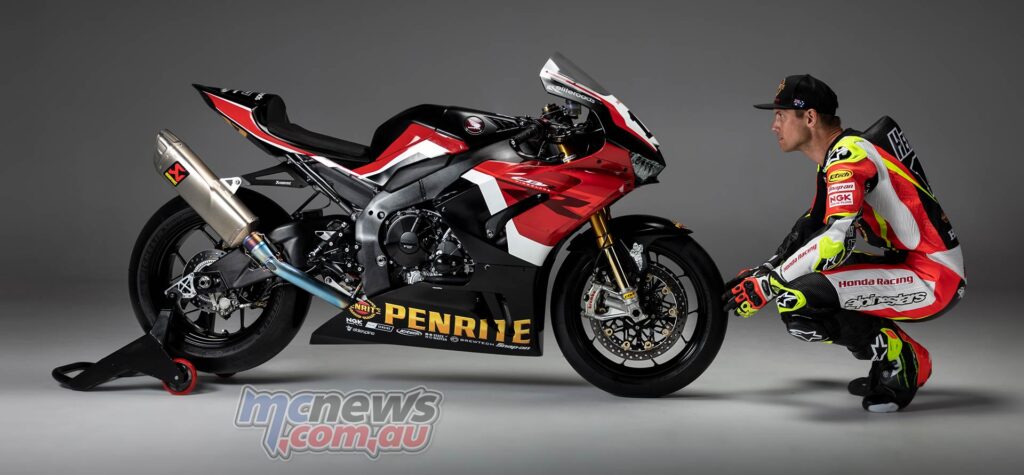
The Penrite Honda Fireblade CBR1000RR-R SP and Troy Herfoss.
That changed recently (as have the shape of Troy’s busted bones, but that’s another story). This marks the first time Honda has given serious thought to their CBR superbike since giving it a facelift in 2017, a bike that when all was really broken down, was still an evolution of the bike Glenn Allerton won his first ASBK title on in 2008. It shows two things: that bike was a real good one, but also how complacent Honda had got with production racing.
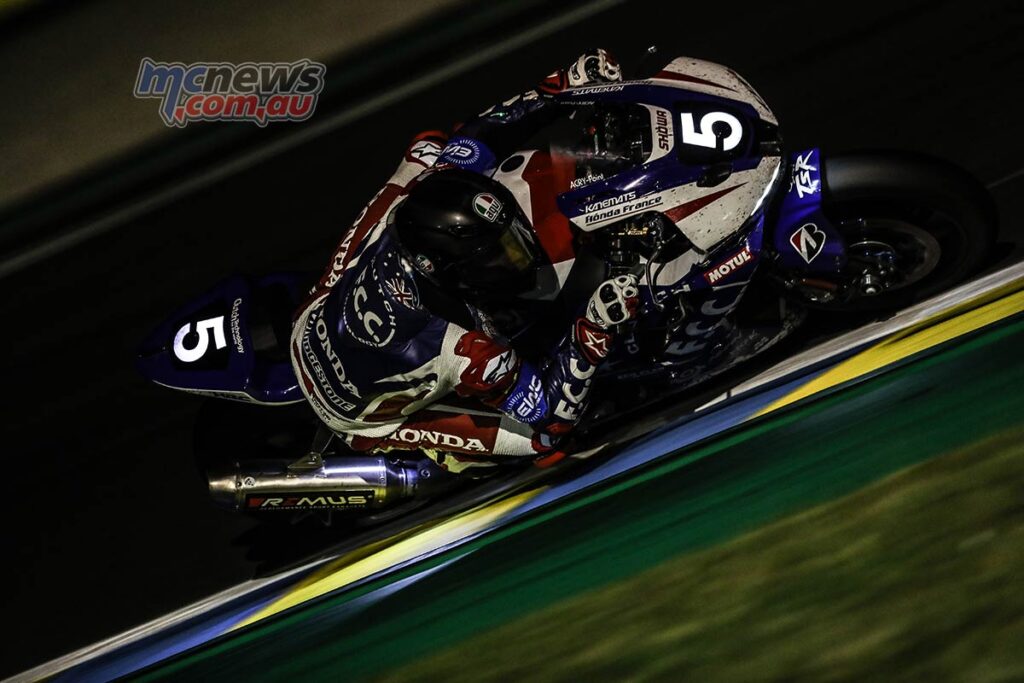
The new CBR coincides with a shift in Honda’s corporate thinking of superbike racing on an international level. The WorldSBK race team with riders Leon Haslam and Alvaro Bautista is now under the same HRC banner as the MotoGP team. Honda is sick and tired of getting their arses kicked by Kawasaki, Ducati, BMW and Yamaha, and now they’re finally doing something about it. So far, the results have been lacklustre, but no one said it would be easy.
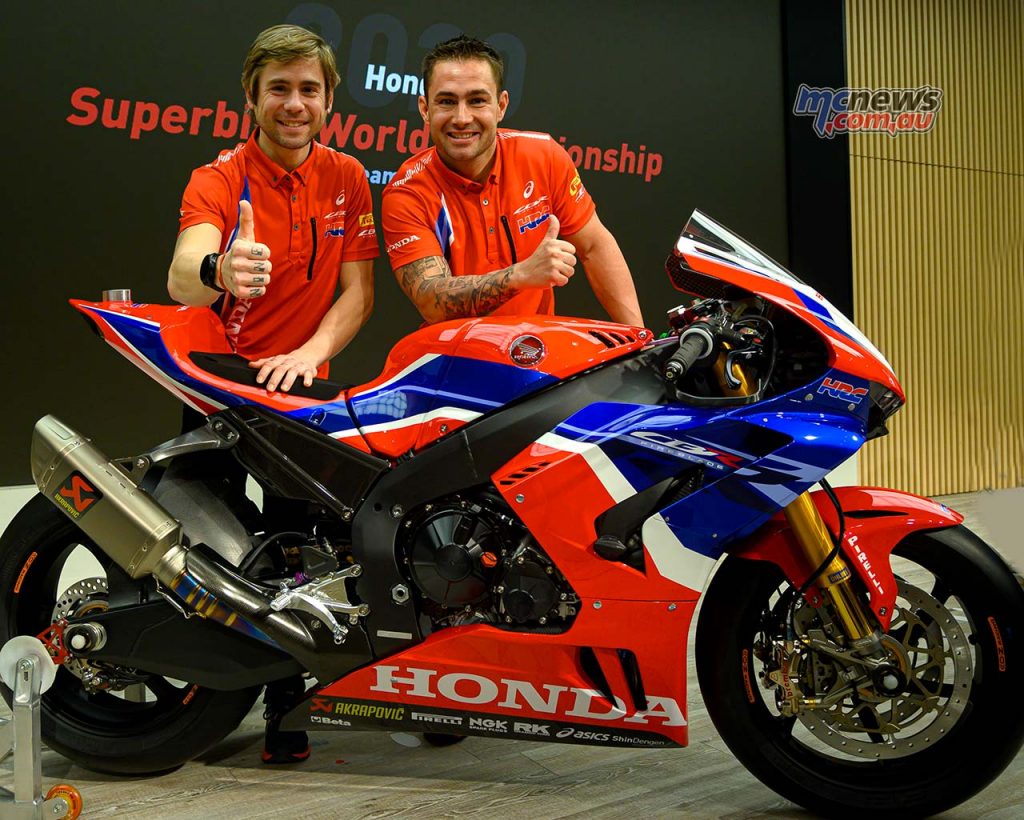
The CBR1000RR-R SP is a case for Honda of ‘if you can’t beat them, join them’. The bike with the longest name in show business is a straight-up racer first, street-bike second, in much the same guise as the Yamaha YZF-R1M, Ducati Panigale V4 R and BMW M 1000 RR. Honda has gone through this thing from top-to-bottom with near nothing left over from the previous edition.
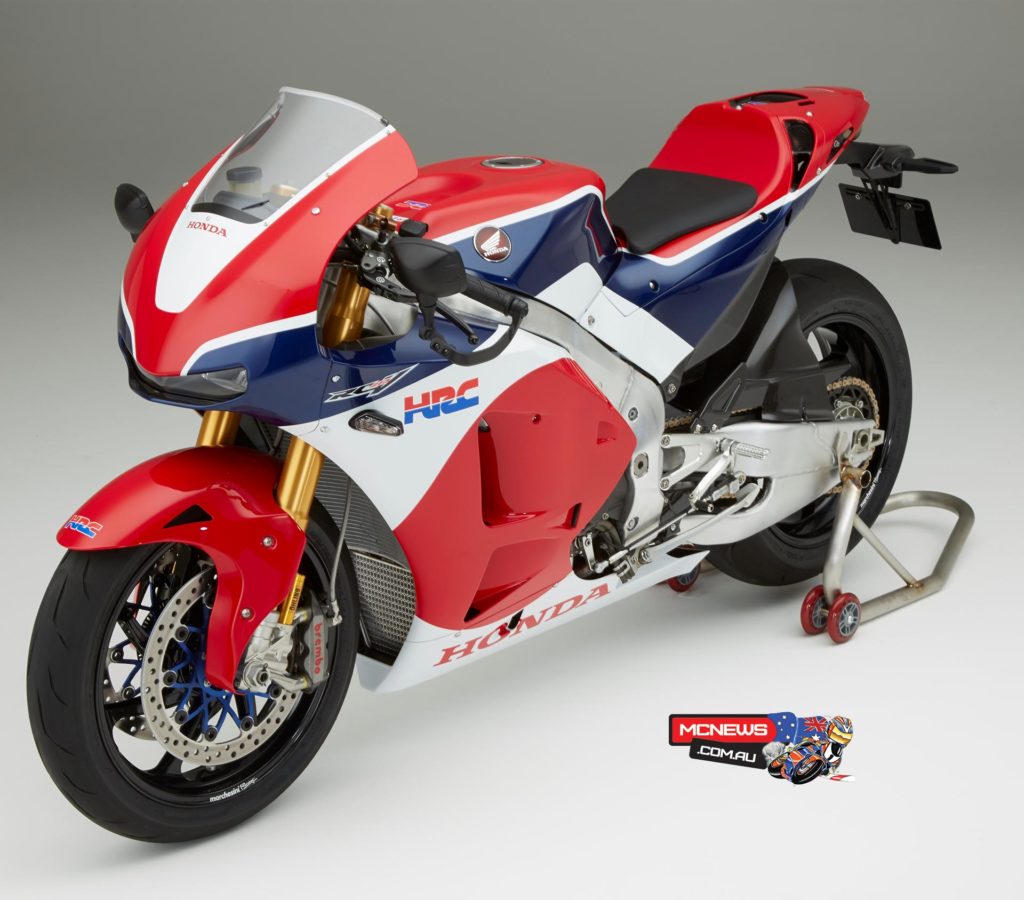
The genes of Honda RC213 V-S of 2015 can be found littered throughout the Fireblade, including the bore and stroke of 81 x 48.5 mm. The 81 mm bore is now the MotoGP-class standard, something those with long memories will remember Ducati was very vocal about when they introduced the Panigale V4 S back in 2018.
The new over-square motor is a dramatic deviation from the previous generation CBR, which ran with 76 x 55 mm bore and stroke figures. As such, the new Fireblade has the largest bore size in the in-line 1000cc superbike class (Kawasaki and Suzuki use 76 mm, BMW has 80 mm and Yamaha’s got 79 mm). Only the 998cc Panigale V4 R, and the over-1000cc bikes V4 S and Aprilia RSV4 1100 Factory use an 81 mm bore.
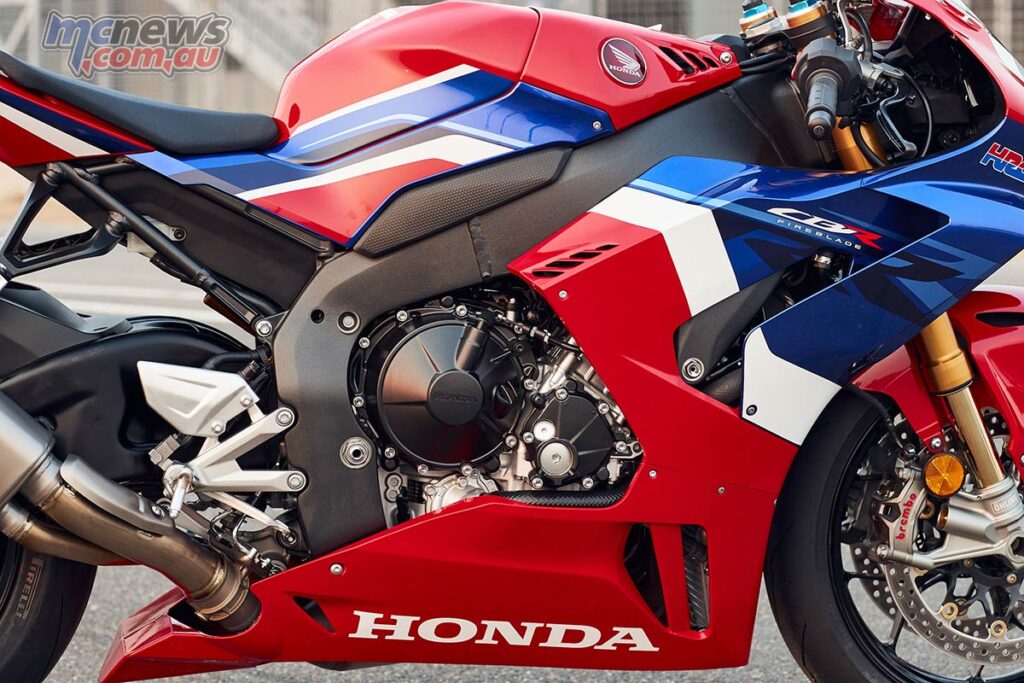
On the other side, the dramatically shorter 48.5 mm stroke hints at what’s to come when you crack the throttle. With rods and pistons that don’t have to travel as far as before, you’ll get a much faster revving motor and in theory it should translate to better top-end performance.
Another factor in the faster revving capability of the new motor is the Jenny Craig weight loss program its gone on. Titanium con-rods are used for the first time in the Fireblade, resulting in a 50 percent weight reduction over the steel units used in 2020 and before. These rods are now clamped to the crank by a single bolt, whereas before you’d have the stud protruding from the bottom of the rod and the cap secured by a locking nut, as per basically every engine ever made.
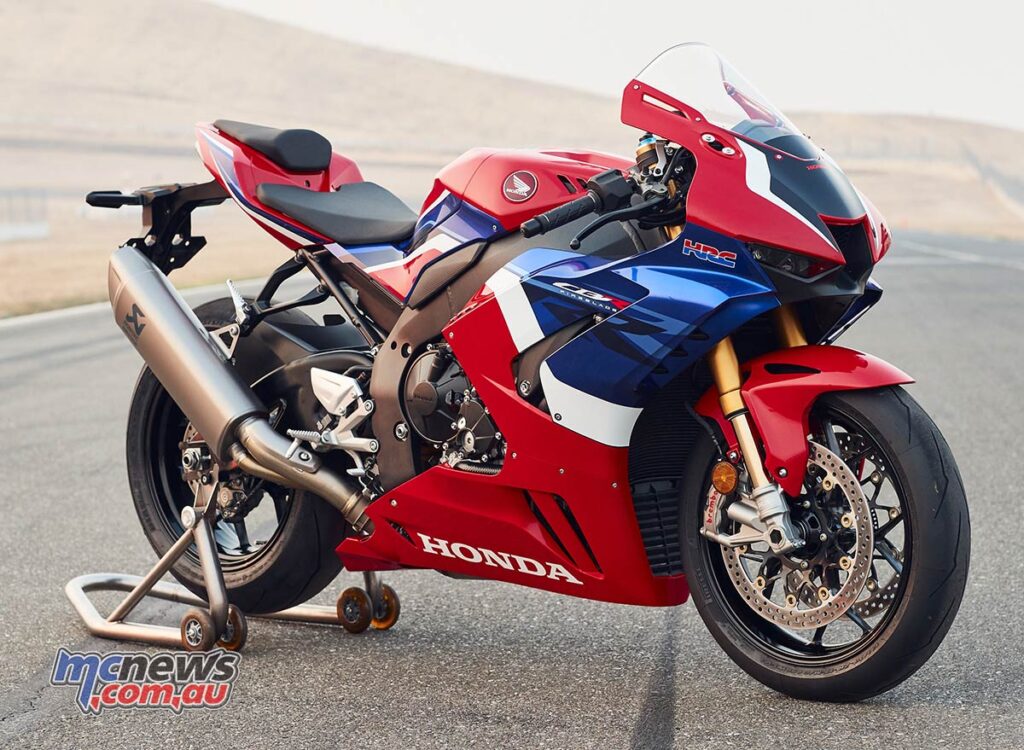
Forged pistons now sit in the 81 mm bore, compression is bumped 0.2 to 13.2:1, larger intake and exhaust valves and a finger-follower rocker arm valve-actuation system has been used, all attributing further to the weight loss program.
Interestingly, the valve train itself is driven by a semi-cam gear train, where the cam chain is driven by the timing gear on the crank via the cam idle gear, helping make the system shorter top to bottom.
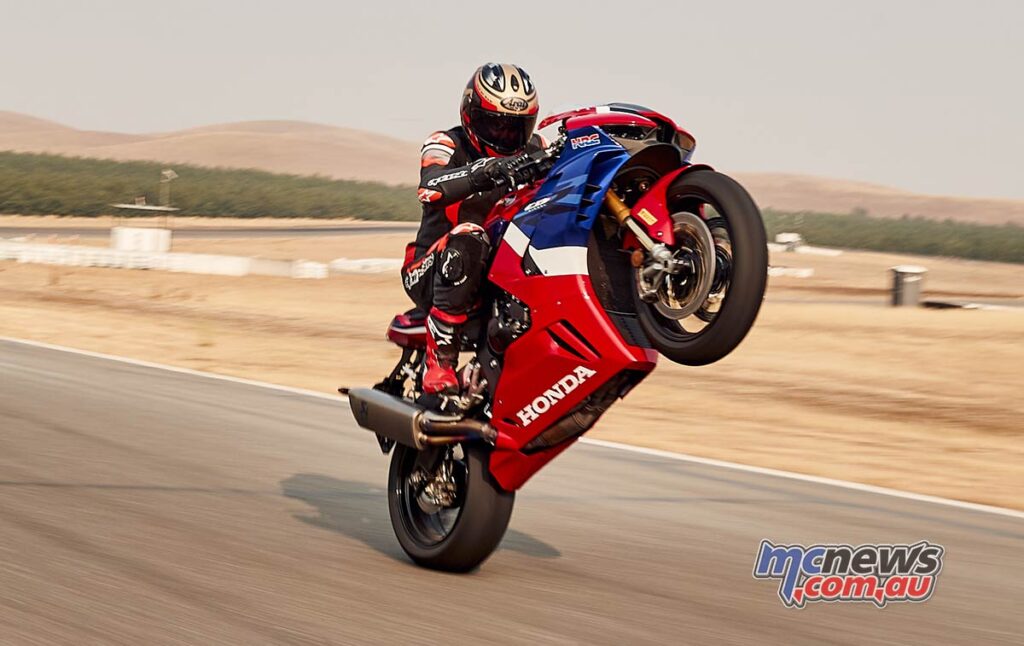
Honda is claiming 215 hp at 14,500 rpm and 113 Nm of torque at 11,000 rpm for the new Fireblade. The rev ceiling has been increased 1,000 rpm to 14,500 rpm, with the motor delivering the kind of top-end performance normally reserved for the BMW S 1000 RR and Kawasaki ZX-10RR.
Unfortunately though our test bike was a California spec’ Fireblade that due to some of the strictest noise and emissions restrictions on the planet was missing almost 30 horsepower from what you would get on an Australian delivered bike. Our test bike neutered in Cali-spec to ‘only’ 189 hp at 12,000 rpm.
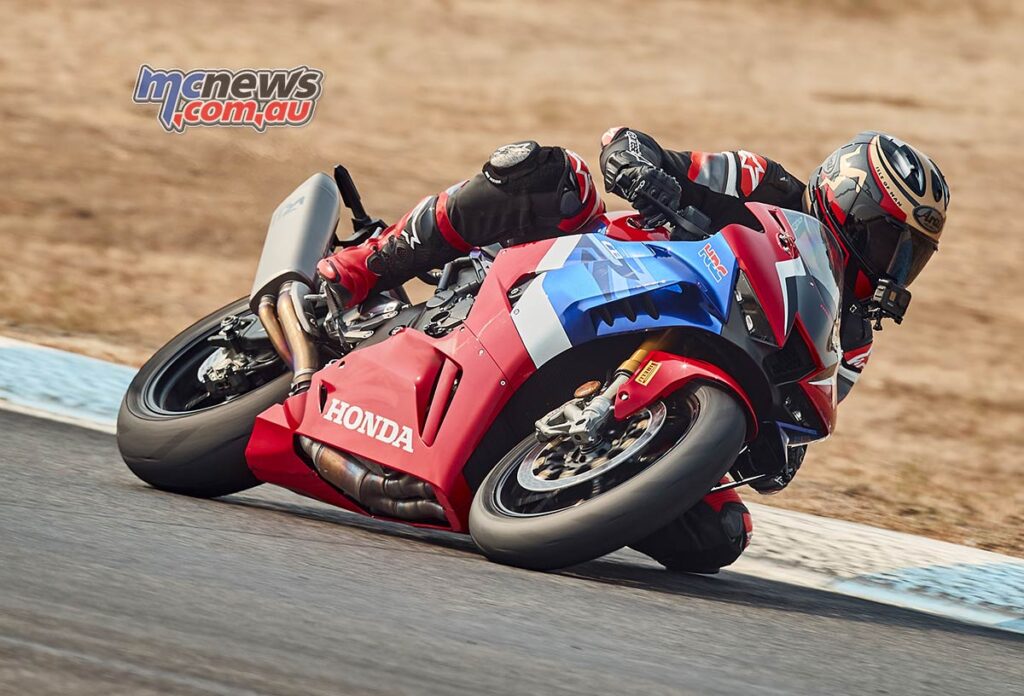 Those with eagle-eyes will notice the missing ignition barrel. I personally hate perimeter keys, although Honda hasn’t got rid of the barrel just to be fancy. It’s gone so engineers could increase the space for the ram air system, with Honda telling us the new induction uses the straightest funnel Honda’s yet produced with air-box volume increased by 25 per cent on the air filter (top) side.
Those with eagle-eyes will notice the missing ignition barrel. I personally hate perimeter keys, although Honda hasn’t got rid of the barrel just to be fancy. It’s gone so engineers could increase the space for the ram air system, with Honda telling us the new induction uses the straightest funnel Honda’s yet produced with air-box volume increased by 25 per cent on the air filter (top) side.
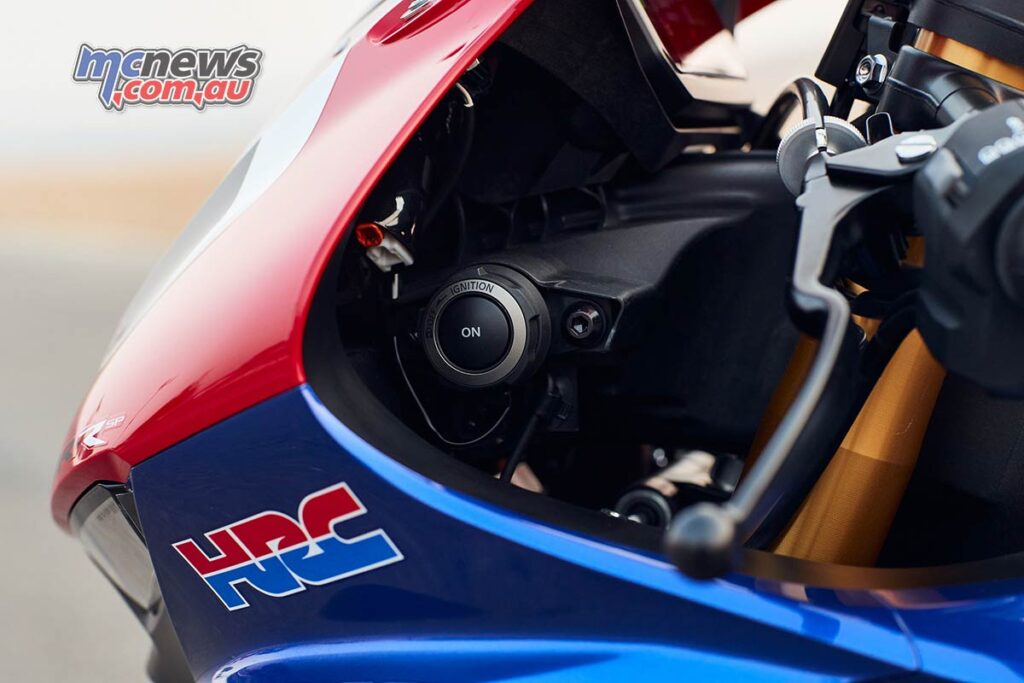
This induction roar, combined with the screaming noise from the stunning steel header/titanium muffler Akrapovic exhaust system makes the new Fireblade one of the best sounding four-cylinder bikes I’ve ever ridden. When on the pipe, it’s bonkers loud, and serves as a reminder to why we love burning petrol, not watts.
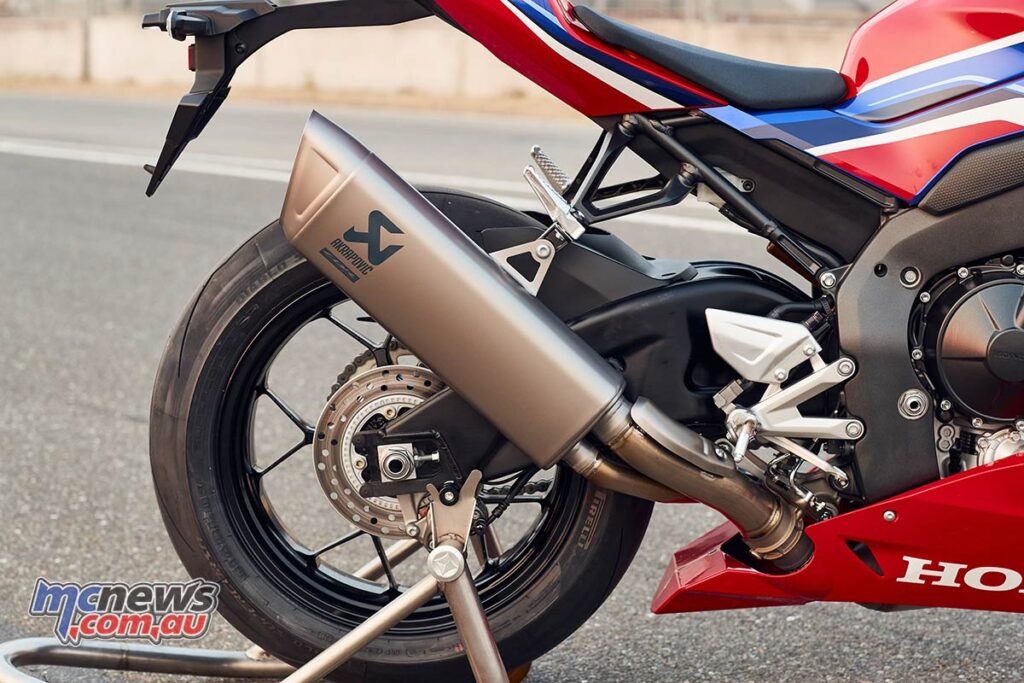
The chassis gets a similar makeover. Stiffer in vertical and torsional rigidity but reduced horizontal rigidity for better feel on the side of the tire, the CBR is more relaxed in its geometry than in 2020. The wheelbase has been increased by 50 mm to 1455 mm, you get a degree more trail and the swingarm is a handy 30.5 mm longer. Another big change is the shock is now mounted directly from the linkage off the swingarm to the motor rather than the frame, which helps reduce the loads put through the chassis.
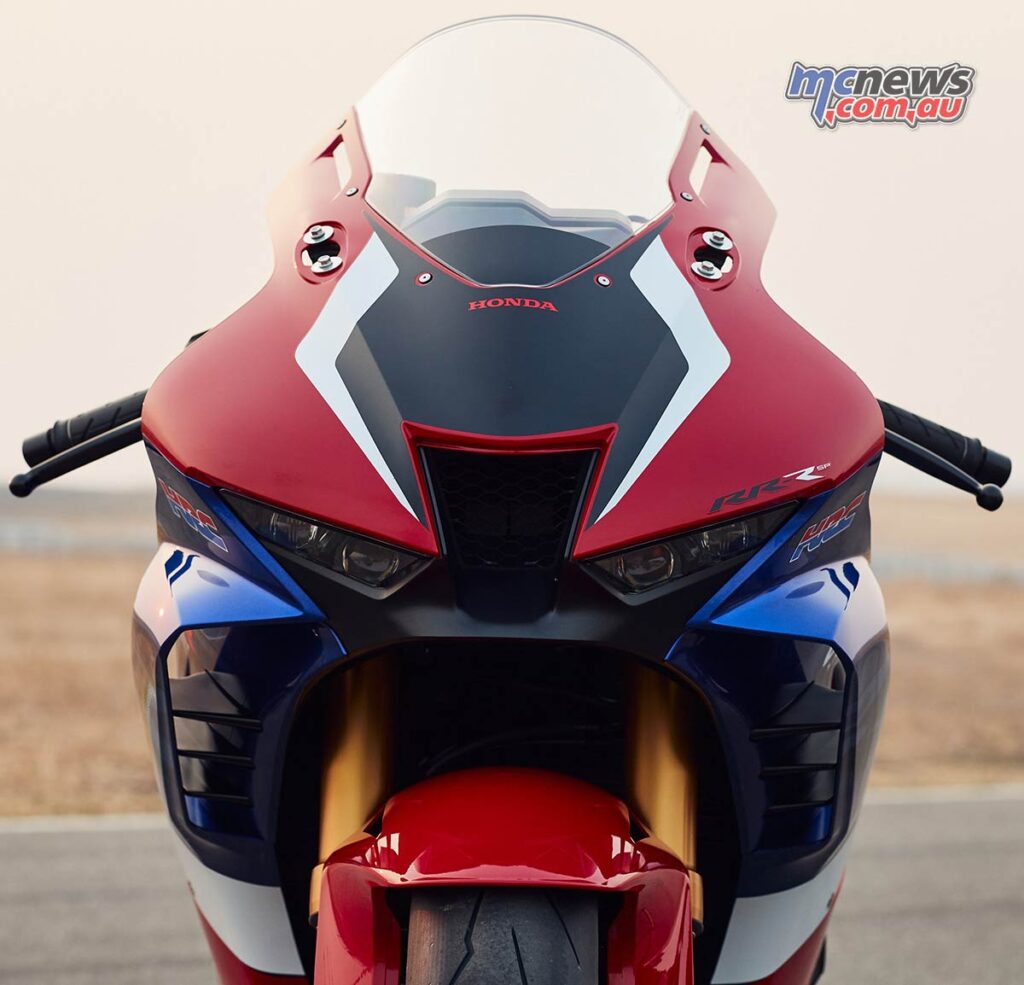
The seat height is down 10 mm to 830 mm; handlebar height down 17 mm to 840 mm, and the pegs are 21 mm higher and 43 mm further back than on the 2020 version, all pointing to a ride position firmly on the attack side.
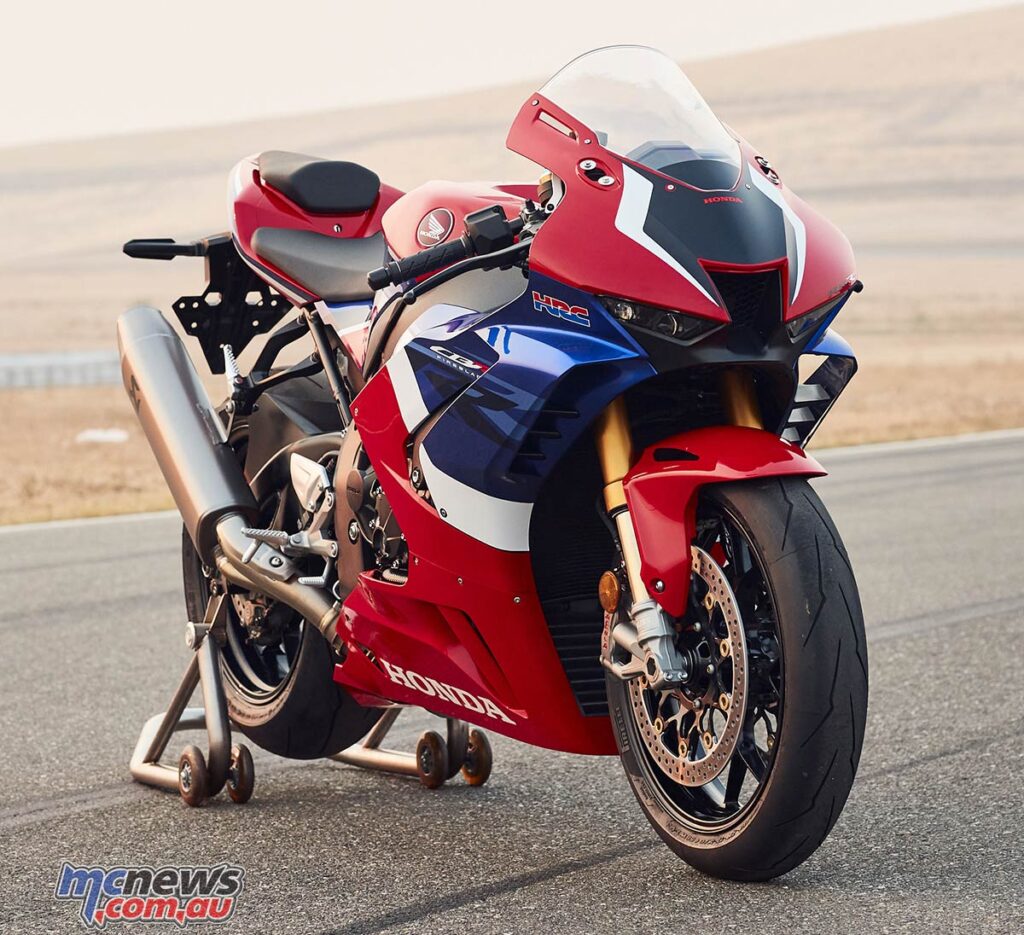
The suspension is the same as found on the Ducati Panigale V4 S in the 43 mm Ohlins NPX Smart EC 2.0 electronically adjustable units up front, matched to a TTX36 Smart EC shock at the rear. Brembo’s Stylema calipers handle the braking, the same as the Panigale.
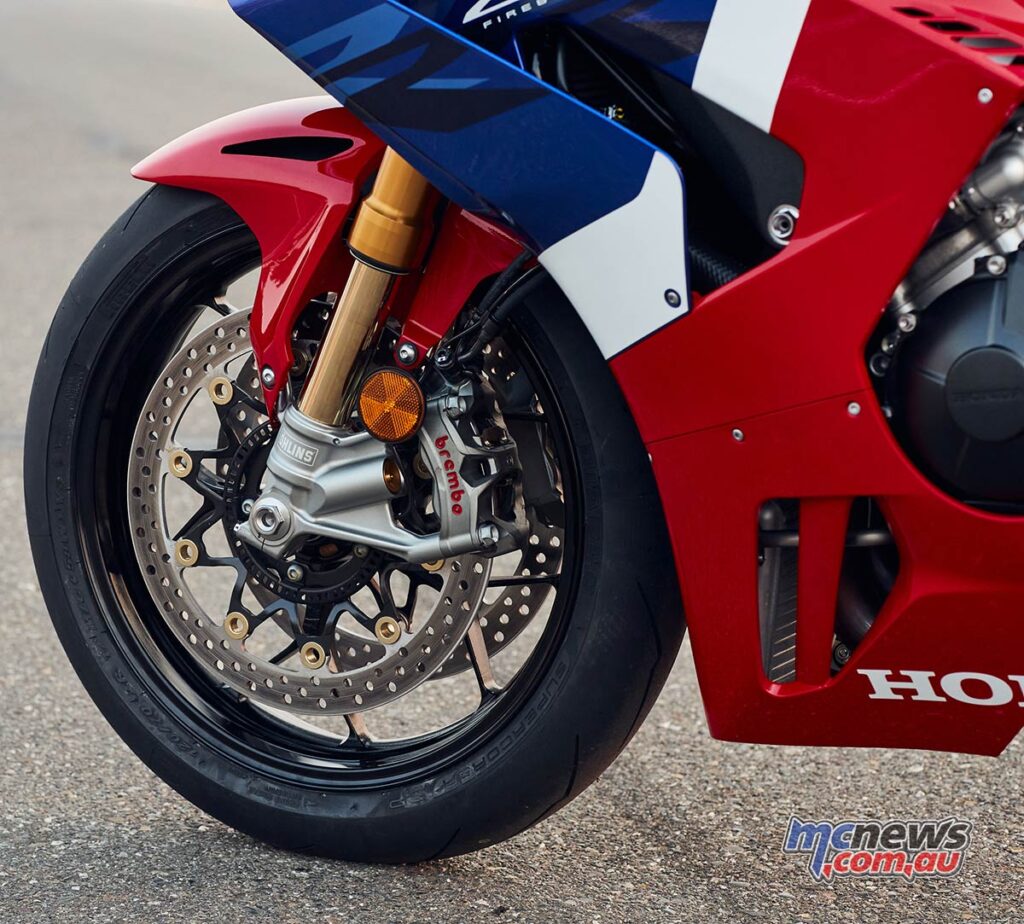
Honda’s used a six-axis Inertial Measurement Unit on the ’Blade, which pairs with Ohlins’s Objective Based Tuning interface (OBTi) software for suspension adjustment. You can get seriously lost in this set-up because there’s so many areas to adjust, but suffice to say you get three auto modes and three manual. Auto allows for changing not via traditional compression and rebound but Braking, Cornering and Acceleration, letting you dial in the performance you want for a given part of the track/road. Manual is the old school way of compression and rebound etc, and does not alter the suspension while you ride (my personal favourite).
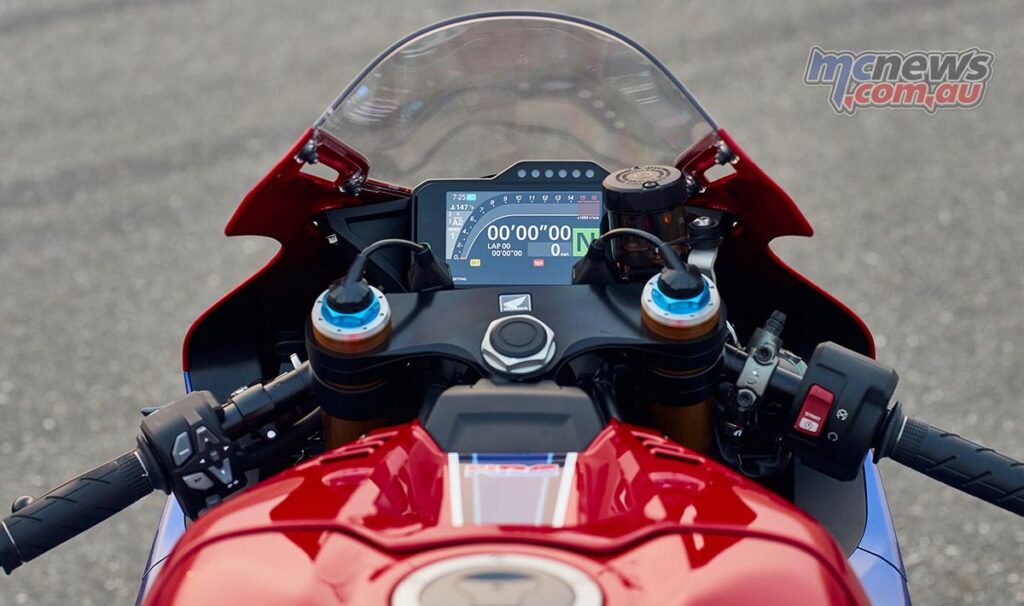
Honda has thankfully ditched the combined wheelie and traction control platform in the electronics. Wheelie control is now on its own with three levels of adjustment, traction control with nine levels plus off. There’s also three riding modes (down from five on the 2017 bike), and mission control is now a 127 mm wide TFT display. Honda’s revamped the way a rider accesses all the electronics to the left joy stick on the handlebar, it’s a far simpler system, but I only got a little bit of time with it on the test because the new Fireblade is like handing someone a new MacBook for two hours and expecting the person to know everything about it. You need to spend days with these systems to get used to them, just like any superbike these days.
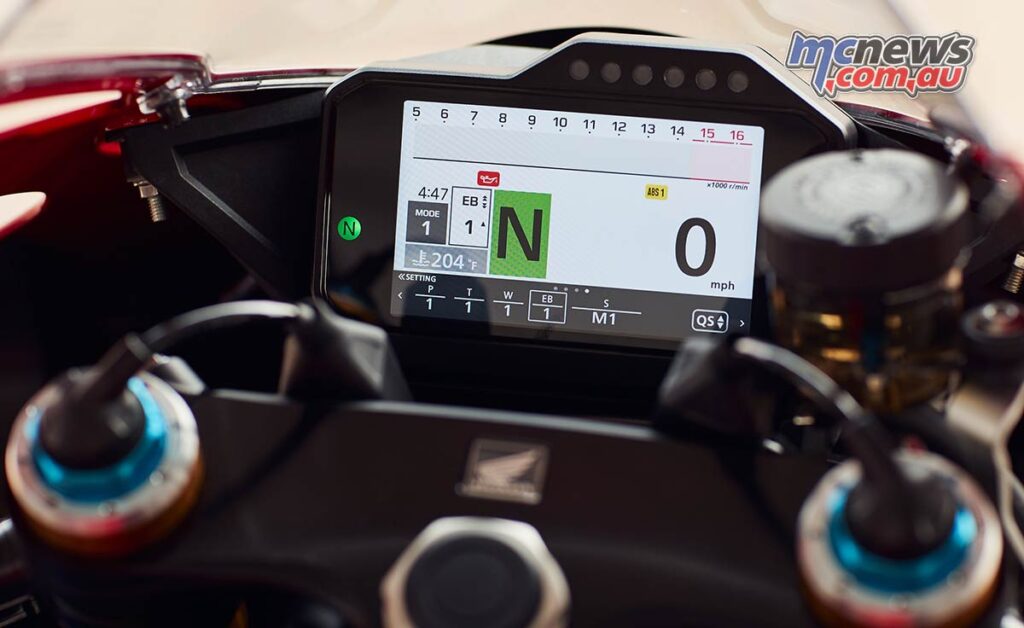
Oh, and before I forget, the clothes.
Again, they’re all new for 2021. Honda’s joined the wing fight and the new CBR delivers the same downforce as Marc Marquez’s 2018 racer but with a smaller area (the Marquez 2018 RCV had long, wide wings, almost like a handlebar moustache. The CBR’s wings are much neater). Crucially, the tank cover is 45 mm lower than in 2020, plus there’s a flatter screen angle which is great for short riders, not so great for taller riders.
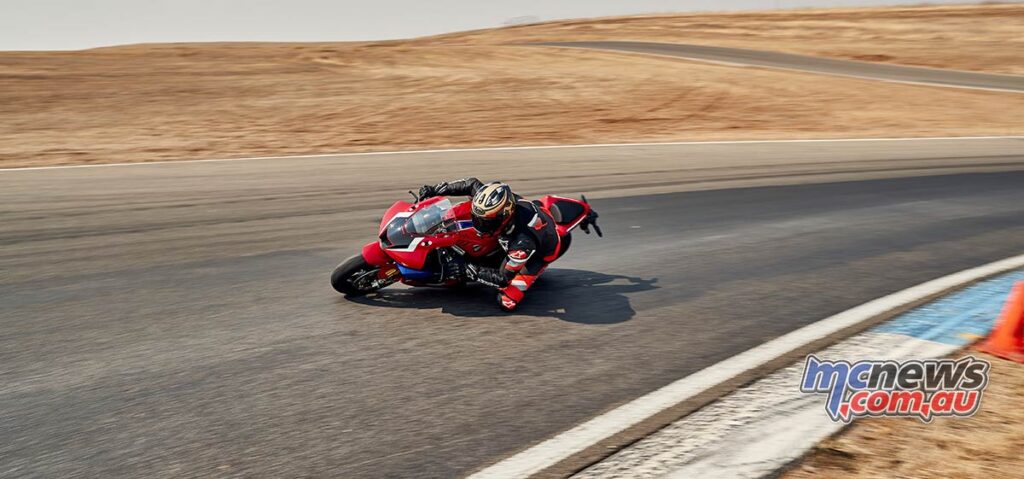
Ok, now all that’s out of the way, what’s the new ’Blade like to ride?
I remember coming off the 2017 press launch at Portimao on Portugal thinking Honda had missed the mark. I can’t say that about this one after sampling it at Thunderhill Raceway in Northern California.
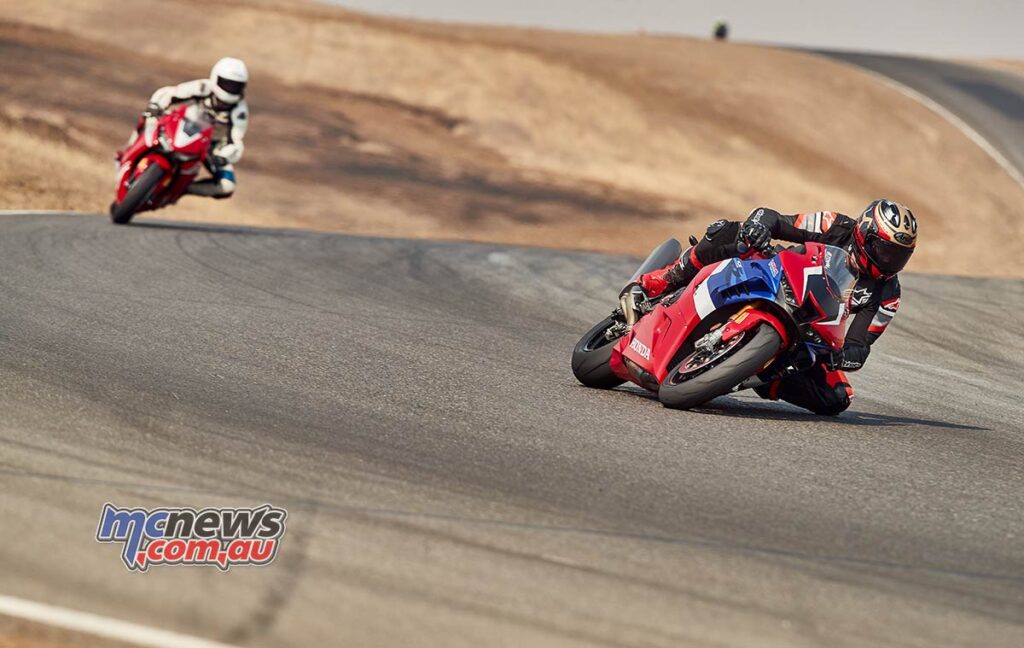
The new CBR is by far the raciest ’Blade ever created. The ergonomic changes are immediately noticeable, with the lack of tank height taking some time to get used to. I like to be lazy and flop my fat gut on the tank to give me some stability under braking and mid-corner, but you simply can’t do that with the new CBR. You’re tucked down so much further than before, it feels almost awkward if you’re not totally pinning it.
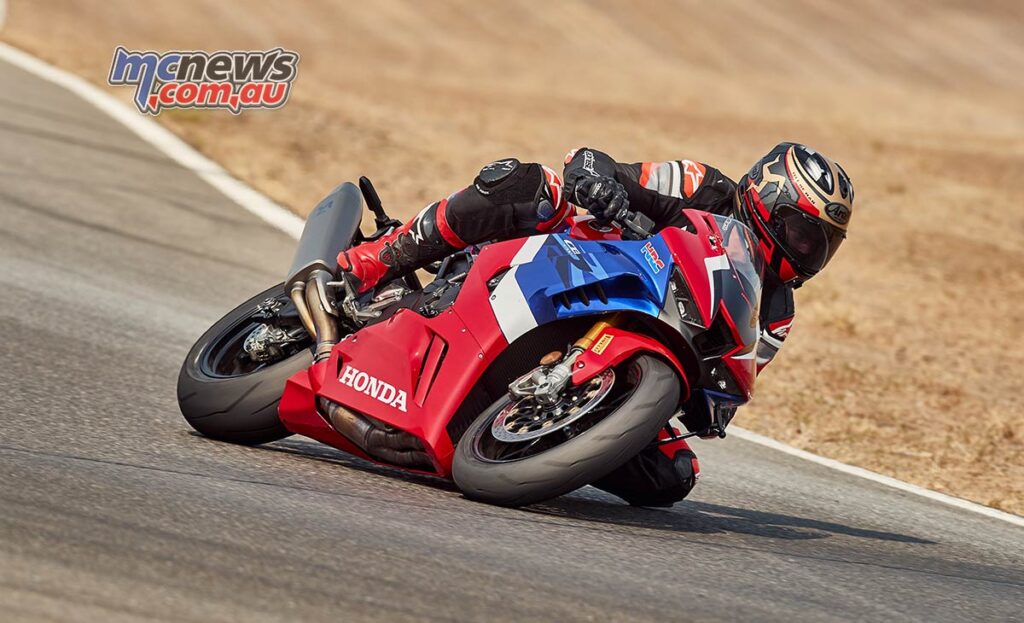
The wider position of the ’bars is almost supermoto-style, giving the rider plenty of leverage and making it easier to get fully tucked in, although the 2021 model’s peg-to-seat distance was too short for my 183 cm frame, simply as I have longer legs than in relation to my torso. It’s nothing a set of rear-sets won’t fix.
You absolutely must keep the CBR thrashing to get good performance, and that’s down to the emissions police firmly sinking their teeth into the Blade’s mid-range. Bear in mind, this is a U.S-specific CBR we’re talking about here, and I’m pretty sure this same problem won’t afflict the Aussie ’Blades coming in. I sure hope it doesn’t because the Cali ’Blade is pretty neutered between 6-8000 rpm. Coming out of the second gear left hander at the back of the pits (turn 11) and nailing the throttle at 7000 rpm was met with a little delinquence, as the motor labored past the 7-8500 rpm flat spot. Once clear, the motor ripped through the remaining 5000 or so rpm like it was child’s play.
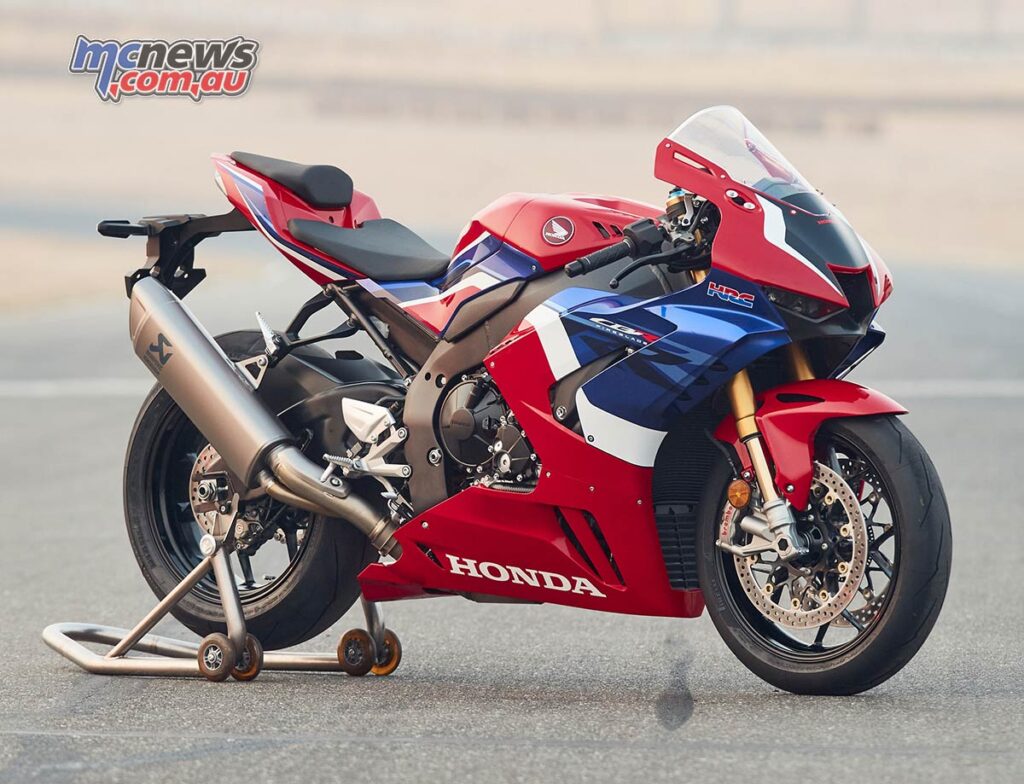
Sadly for Honda, this issue isn’t really their fault. While other manufacturers have got away with their bikes not feeling too castrated in the mid-range (like the admittedly bigger capacity Aprilia RSV4), the Honda has to deal with not just C02’s but noise, the latter of which the CBR has in spades. This is the problem BMW had with their 2019-onwards S 1000 RR and is only a problem that can be fixed once a decent tuner goes into the electronics and frees everything up, just like Herfoss’s bike.
Compared to the 2020 edition, the new CBR’s chassis is absolutely on another level. The ’21 CBR will change direction at barely the thought of doing so, especially when you put the suspension into manual mode and take the electronic intervention away. This generation Ohlins suspension, combined with the excellent throttle response and the supreme grip from the Pirelli Supercorsa SP rubber, allows you to dial in more and more throttle earlier and earlier in the corner, constantly urging you to max out acceleration drive.
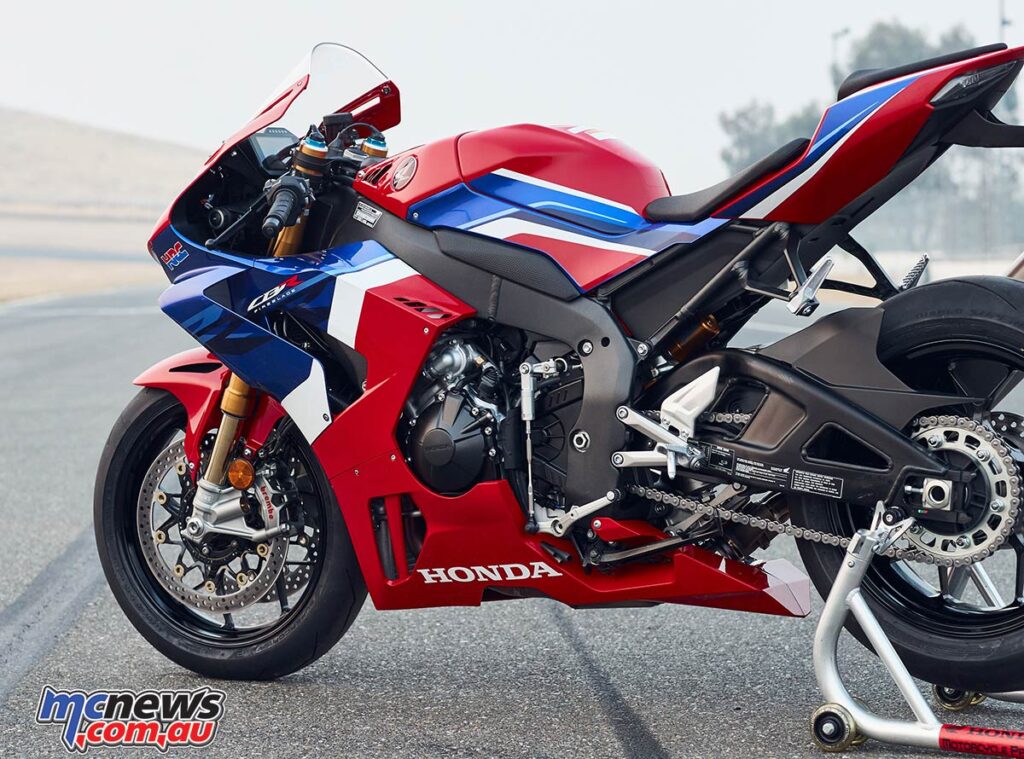
The electronics are a massive improvement over the 2020 machine. Allowing the rider to have control over wheelie and traction made for a much more enjoyable ride as the Honda wasn’t trying to fight one problem with another, and once I get used to how the chassis reacted, I gradually wound back the intervention to have the most power, least traction and wheelie control, and the most engine braking. From here, the CBR was an absolute gem.
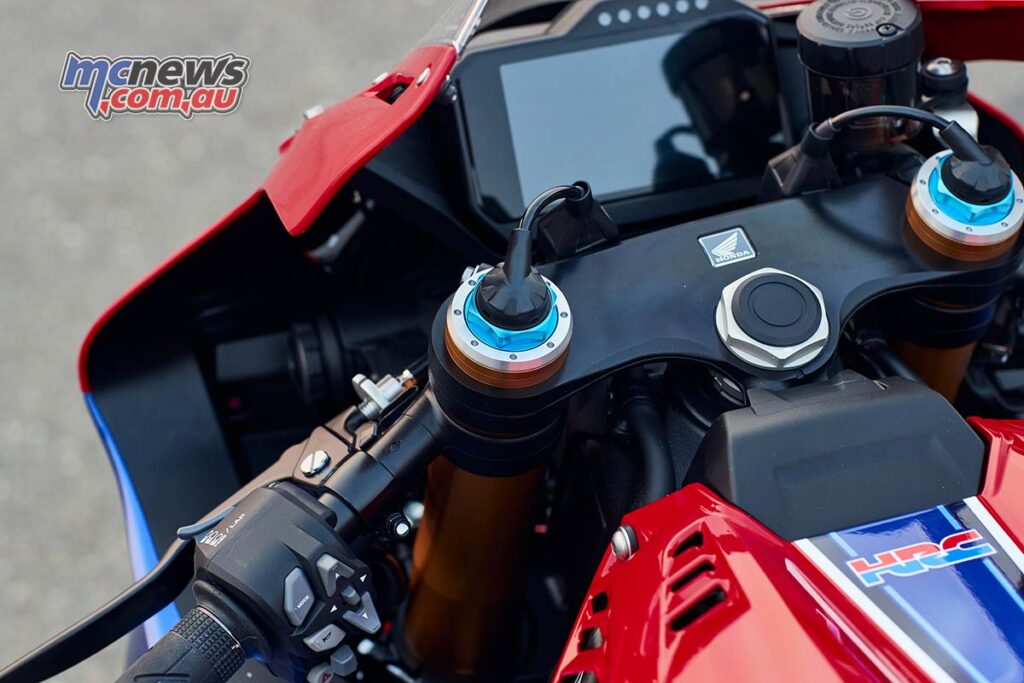
Another area of vast improvement was on the brakes. The new Stylema calipers and Brembo radial master-cylinder are miles ahead of what the 2020 had on offer. You can’t switch the ABS off, but the performance is so much better you’ll have to be seriously hammering to find the limits of the system.
The top speed at Thunderhill is about 240 km/h, and the new CBR felt solid as a rock at that speed. I can only put that down to the revised aero winglets, because I had ridden a 2020 edition earlier that day and it didn’t have the same poise as the 2021 at top speed. I can thus only assume the wings work, but hey, I’m no engineer.
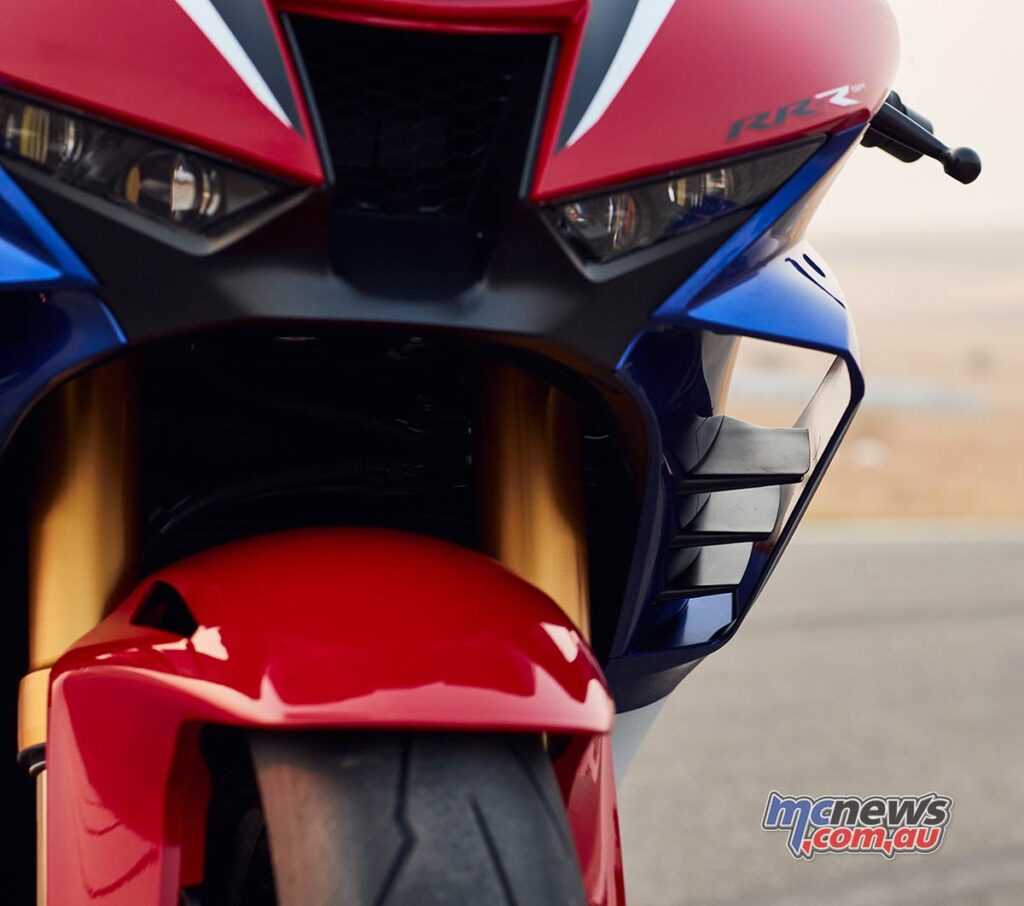
What I can tell you is the new CBR1000RR-R SP is an incredible package, but our test bike was not perfect. The mid-range flat spot of the Californa spec’ bike is disappointing but I am sure that would not be something that ails an Aussie specification Fireblade. Still, considering the eye-popping price of $49,999 (far more than a Ducati Panigale V4 S or Yamaha YZF-R1M), it doesn’t offer enough extra performance to bridge the financial gap.
It’s clear Honda has developed a solid base package for you to go superbike racing. I can’t tell you what it’s like on the road as I haven’t ridden it there, but on track, the new ‘Blade is shaper than ever.
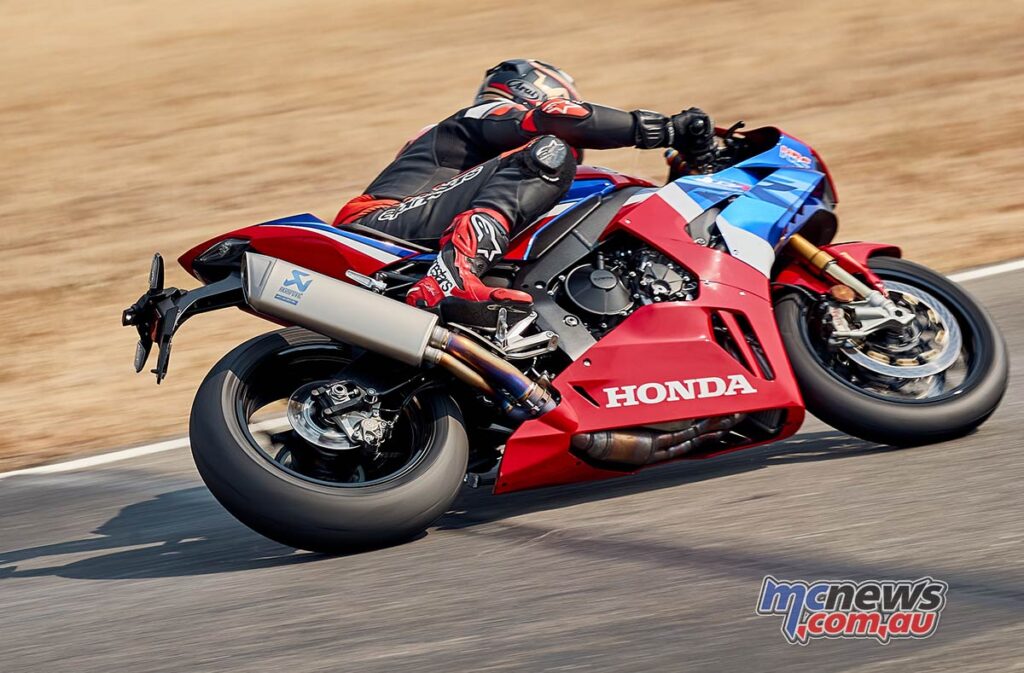
2021 Honda CBR1000RR-R SP Fireblade Specifications
| Type | Liquid cooled 4stroke 16valve DOHC, Inline 4 |
| Engine Displacement (cm³) | 999.9cc |
| No. of Valves per Cylinder | 4 |
| Bore ´ Stroke (mm) | 81mm x 48.5mm |
| Compression Ratio | 13.0 x 1 |
| Max. Power Output | 160 kW / 215 horsepower @ 14,500 |
| Max. Torque | 113 Nm @ 12,500 |
| Oil Capacity | 4.0L |
| Carburation | PGMDSFI |
| Fuel Tank Capacity | 16.1L |
| Fuel Consumption | 16.0km/litre |
| Starter | Electric |
| Battery Capacity | 126 YTZ7S |
| Clutch Type | Wet, multiplate hydraulic clutch with assist slipper |
| Transmission Type | 6 speed |
| Final Drive | Chain |
| Type | Aluminium composite twin spar |
| Dimensions (L x W x H) | 2100 x 745 x 1140 mm |
| Wheelbase | 1455 mm |
| Caster Angle | 24o |
| Trail | 102 mm |
| Seat Height | 830 mm |
| Ground Clearance | 115 mm |
| Kerb Weight | 201 kg |
| Front Suspension | Showa Telescopic inverted fork with an inner tube diameter of 43 mm, and a Big Piston Front Fork with preload, compression and rebound adjustment, 120 mm stroke. SP – Telescopic inverted fork with inner diameter of 43mm and Ohlins NPX Smart-EC with preload, compression and rebound adjustments. 125 mm stroke. |
| Rear Suspension | Rear Suspension – Unit Pro-Link with gas-charged HMAS damper featuring 10-step preload and stepless compression and rebound damping adjustment, 137 mm stroke. Showa BFRC-Light SP – Pro-Link with gas-charged Ohlins TTX36 Smart-EC damper featuring preload, compression and rebound damping. 143 mm stroke. |
| Rim Size Front | 17 inch x 3.5 |
| Rim Size Rear | 17 inch x 6.0 |
| Tyres Front | 120/70ZR17 Pirelli Diablo Supercorsa SP – Bridgestone RS11 |
| Tyres Rear | 200/55ZR17 Pirelli Diablo Supercorsa SP Bridgestone RS11 |
| ABS System Type | 2 Channel |
| Front | 330mm disc with radial mount 4 piston Nissin caliper, SP 330mm disc with 4-piston Brembo caliper |
| Rear | 220mm disc with 2 piston Brembo caliper |
| Instruments | TFT LCD |
| Security System | HISS |
| Headlight | LED |
| Taillight | LED |
| RRP | $49,999 |
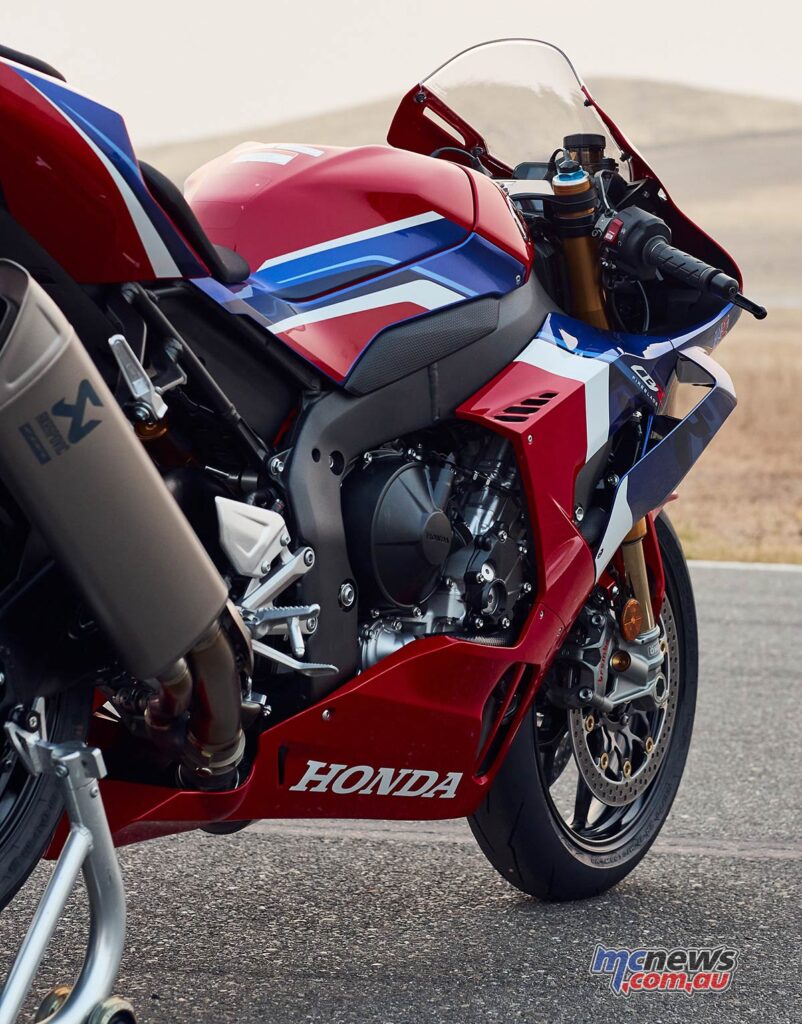
Photography by Drew Ruiz
Source: MCNews.com.au

